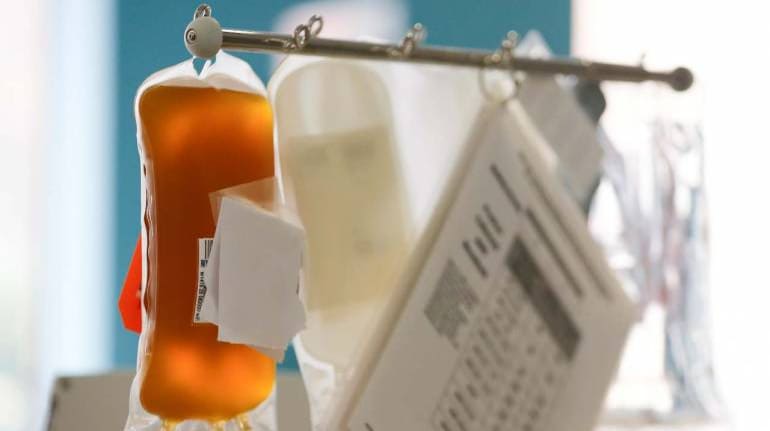



Using blood of recovered COVID-19 patients - or so-called convalescent plasma - as a potential treatment is of little benefit in helping hospitalised patients fight off the infection, according to results of a clinical trial in India.
Published in the BMJ British Medical Journal on Friday, the results show that convalescent plasma, which delivers antibodies from COVID-19 survivors to infected people, failed to reduce death rates or halt progression to severe disease.
The findings, from a study of more than 400 hospitalised COVID-19 patients, are a setback for a treatment that US President Donald Trump touted in August as an "historic breakthrough".
The United States and India have authorised convalescent plasma for emergency use.
Other countries, including Britain, are collecting donated plasma so that it could be widely rolled out if shown to be effective.
"The ... trial was able to show a small effect on the rate at which patients were able rid themselves of the virus, but this was not enough to improve their recovery from the disease," said Simon Clarke, an expert cellular microbiology at the University of Reading.
"In simple terms, there were no clinical benefits to the patients."
The Indian researchers enrolled 464 adults with confirmed moderate COVID-19 who were admitted to hospitals across India between April and July. They were randomly split into two groups - with one group receiving two transfusions of convalescent plasma, 24 hours apart, alongside best standard care, and the control group best standard care only.
Follow our LIVE blog for the latest updates of the novel coronavirus pandemic
After seven days, use of convalescent plasma seemed to improve some symptoms, such as shortness of breath and fatigue, the researchers said, and led to higher rates of something known as "negative conversion" - a sign that the virus is being neutralised by antibodies.
But this did not translate into a reduction in deaths or progression to severe disease by 28 days.
"The poor performance of convalescent plasma in this trial is disappointing but not entirely surprising," said Ian Jones, a professor of virology, also at Reading University.
He said the plasma is more likely to work if given very swiftly after someone is contracts COVID-19.
He urged these and other researchers to continue to conduct trials of convalescent plasma as a potential COVID-19 treatment, but to do so in newly diagnosed patients.
"We still do not have enough treatments for the early stage of disease to prevent severe disease and until this becomes an option, avoiding being infected with the virus remains the key message," he said.
Follow our full coverage of the coronavirus pandemic here.
Discover the latest Business News, Sensex, and Nifty updates. Obtain Personal Finance insights, tax queries, and expert opinions on Moneycontrol or download the Moneycontrol App to stay updated!